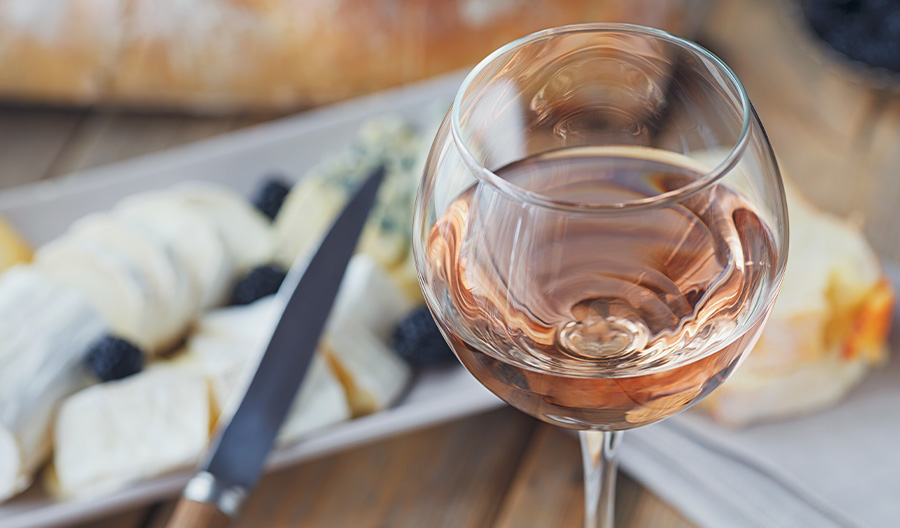The word “Mediterranean” evokes a way of life—long, leisurely meals under azure blue skies and brilliant sunshine, overlooking the deep blue sea, with maybe a touch of French Riviera glamour. The Mediterranean diet, with its abundant fresh fruits and vegetables, fresh fish, olive oil, aromatic herbs and a glass of local wine, is among the healthiest in the world.
While the Mediterranean coast is long, the territory covered by the Méditerranée Indication Géographique Protégée (IGP), or Protected Geographical Indication (PGI), includes coastal regions of southeast France, including Provence. Wines carrying this name come from vineyards that both overlap and fall in-between well-known winegrowing areas of the southeast, including the Rhône Valley and Provence.
Ten departments are included in the Méditerranée IGP region: Alpes de Haute Provence, Hautes-Alpes, Alpes-Maritimes, Ardèche, Bouches-du-Rhône, Drôme, Var, Vaucluse, Corse-du-Sud and Haute-Corse.
But Mediterranée IGP is more than just a large region. The indication of origin gives a guarantee of place and quality, with flavors of ripe, sun-kissed fruit, sometimes a touch of garrigue herbs, a whisper of the salty sea breeze or a hint of Mistral-dried rocks.
The region boasts attractive diversity, which helps to create a myriad of wine styles. On a sunny, coastal stretch of the Mediterranean, salty sea breezes keep the vineyards fresh. Vineyards around the Rhône estuary are planted on alluvial soils and rocky schist, while sites farther east, in the Var and at the foothills of the Alps, are planted on clay and limestone soils.
The Mistral-swept Rhône Valley stretches from the cooler northern vineyards to the hotter south. Hills and valleys extend to the cooler uplands of the Southern Alps.

The Mediterranée IGP covers approximately 26,934 acres of vineyards Roughly 80% of current wine production is rosé, with 15% devoted to red wine and 5% to white wine. Rosé production has grown strongly, more than doubling in the past couple of years. The U.S. is the largest export market, receiving approximately 40% of export volume.
The wines are both a blend of different varieties and single-varietal selections that creatively incorporate historic, international and new grapes. Traditional varieties such as Grenache and Syrah are used in both red and rosé wines, while Roussanne, Marsanne, Viognier, Rolle (Vermentino) and Muscat are often incorporated into white wines. Internationally well-known varieties such as Merlot, Cabernet Sauvignon and Chardonnay also feature here, as do lesser-known, new varieties such as Chasan, a white crossing of Listan and Chardonnay, and the red varieties Caladoc (Grenache crossed with Malbec) and Marselan (Cabernet Sauvignon crossed with Grenache).
Mediterranée IGP offers a refreshing, modern approach within a classic region, giving a dynamic view of the tastes and flavors to familiar grapes. Straightforward Syrah or Grenache, maybe from a cool site or young vines, yields wines with fresh vibrancy and fruit-driven charm. Blends are presented with unusual and creative combinations, like rosés with an aromatic twist of Muscat or Viognier, ripe and fruity Merlot with some Caladoc structure, or a classic Roussanne blended with Chardonnay.
For a taste of the Mediterranée lifestyle, consider local dishes to accompany the region’s wines. Summer meals of salad Niçoise pair well with the fresh flavors of young wines; fresh seafood and spicy fish soups and stews from the coastal region marry well with rich Roussanne- or Chardonnay-based whites or fruity Grenache rosé; tangy goat cheese with a bowl of garrigue-scented olives pair beautifully with a tangy Vermentino or Viognier; and herby rosé and wintery, rich meat dishes match seamlessly with a full-bodied red.
Diversity and creativity are the hallmarks of this region, offering a style and flavor to suit every palate. A veritable treasure trove of tastes is ready to be discovered.

